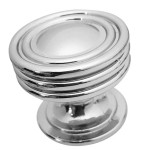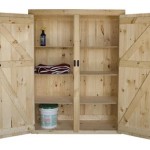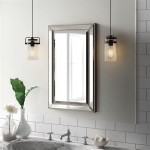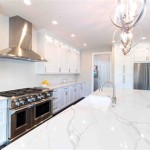Kitchen Cabinet Door Hinge Types: A Comprehensive Guide
Kitchen cabinet hinges are fundamental components that facilitate the opening and closing of cabinet doors. They are available in a wide array of types, each possessing distinct characteristics suitable for specific applications and design preferences. Understanding the different hinge types is crucial for selecting the most appropriate option for a given kitchen renovation or cabinet installation project. This article provides a comprehensive overview of common kitchen cabinet door hinge types, exploring their features, advantages, and ideal uses.
The selection of appropriate kitchen cabinet hinges directly impacts the functionality, aesthetics, and longevity of the cabinetry. Factors to consider when choosing hinges include the overlay style (whether the door covers part of the cabinet frame or sits flush), the weight and size of the door, the desired level of adjustability, and the overall aesthetic of the kitchen. Furthermore, the ease of installation and the hinge's durability are important considerations for ensuring long-term performance and satisfaction.
Concealed Hinges (European Hinges)
Concealed hinges, often referred to as European hinges, are characterized by their hidden installation, rendering them invisible when the cabinet door is closed. This feature contributes to a clean and modern aesthetic, making them a popular choice for contemporary kitchen designs. These hinges are typically composed of two parts: a cup that is mortised into the cabinet door and a mounting plate that attaches to the cabinet frame. The two parts are then connected, allowing the door to swing open and closed.
One of the primary advantages of concealed hinges is their adjustability. Most concealed hinges offer three-way adjustability, allowing for fine-tuning of the door's position in terms of height, depth, and side-to-side alignment. This adjustability ensures that the doors are perfectly aligned, preventing gaps and creating a seamless appearance. This is particularly beneficial when working with less-than-perfectly square cabinets or walls.
Concealed hinges are available in a variety of opening angles, typically ranging from 95 degrees to 170 degrees or more. The choice of opening angle depends on the desired accessibility and the layout of the kitchen. Wider opening angles allow for greater access to the cabinet's contents, while smaller angles may be suitable for cabinets in tight spaces. Soft-close mechanisms are also commonly integrated into concealed hinges, preventing the doors from slamming shut and reducing noise.
The installation of concealed hinges involves creating a precisely sized mortise in the cabinet door for the hinge cup. This requires specialized tools, such as a Forstner bit or a hinge boring jig. While the initial installation may be more complex than that of other hinge types, the adjustability and aesthetic benefits often outweigh the added effort. Concealed hinges are available in various materials, including steel and stainless steel, with different finishes to match the cabinet hardware.
Overlay is a critical factor when selecting concealed hinges. Overlay refers to the amount that the cabinet door covers the cabinet frame. Common overlay types include full overlay, half overlay, and inset. Full overlay hinges are used when the cabinet door completely covers the cabinet frame, while half overlay hinges are used when the door partially covers the frame. Inset hinges are used when the door sits flush with the frame. Selecting the correct overlay hinge is essential for proper door alignment and functionality.
Butt Hinges
Butt hinges are one of the oldest and most traditional types of hinges. They consist of two rectangular leaves that are mortised into both the cabinet door and the cabinet frame. The leaves are connected by a pin, allowing the door to swing open and closed. Butt hinges are typically visible when the door is closed, contributing to a classic and timeless aesthetic. They are commonly used in traditional and vintage kitchen designs.
Butt hinges are available in a variety of sizes, materials, and finishes. The size of the hinge should be proportional to the size and weight of the cabinet door. Larger and heavier doors require larger and stronger hinges. Common materials include steel, brass, and stainless steel. Finishes include polished brass, antique bronze, satin nickel, and oil-rubbed bronze, allowing for seamless integration with the overall kitchen design.
The installation of butt hinges requires precise mortising of both the door and the frame. This can be a time-consuming process, but it is essential for ensuring proper door alignment and functionality. A mortising jig can be used to assist in creating accurate and consistent mortises. Once the mortises are created, the hinge leaves are secured with screws. The pin can then be inserted to connect the two leaves.
One of the limitations of traditional butt hinges is their lack of adjustability. Once installed, the door's position cannot be easily adjusted. This makes it crucial to ensure that the mortises are perfectly aligned during installation. However, some butt hinges are available with slight adjustability features, such as slotted screw holes that allow for minor adjustments. Furthermore, ball-bearing butt hinges are available, offering smoother operation and increased durability, especially for heavier doors.
Butt hinges are often favored for their durability and strength. When properly installed and maintained, they can provide years of reliable performance. They are also relatively inexpensive compared to some other hinge types. However, their visible appearance may not be suitable for all kitchen designs, particularly those that prioritize a clean and minimalist aesthetic.
Wrap-Around Hinges
Wrap-around hinges, also known as face-frame hinges, are designed specifically for cabinets with face frames. They consist of a hinge leaf that wraps around the edge of the cabinet frame, providing a secure and stable connection. These hinges are typically visible when the door is closed, but they offer a relatively simple and straightforward installation process.
Wrap-around hinges are available in both full overlay and partial overlay configurations. Full overlay hinges are used when the cabinet door completely covers the face frame, while partial overlay hinges are used when the door partially covers the frame. The choice of overlay type depends on the desired aesthetic and the layout of the cabinetry. Some wrap-around hinges also offer adjustability features, allowing for fine-tuning of the door's position.
The installation of wrap-around hinges is relatively simple, requiring only basic tools such as a screwdriver and a drill. The hinge leaf is attached to the cabinet frame with screws, and the other leaf is attached to the cabinet door. The hinge is then closed, and the two leaves are connected. While the installation is simpler than that of concealed hinges, the adjustability options are generally more limited.
Wrap-around hinges are a cost-effective option for face-frame cabinets, offering a balance of affordability and ease of installation. However, their visible appearance may not be suitable for all kitchen designs. They are commonly used in more traditional or transitional kitchens, where a more utilitarian aesthetic is acceptable. They are generally not as durable or aesthetically pleasing as concealed hinges.
Pivot Hinges
Pivot hinges are unique in that they mount at the top and bottom edges of the cabinet door, rather than on the side. They allow the door to swing open around a central pivot point, creating a distinct and contemporary look. Pivot hinges are often used for large or heavy doors, as they provide excellent support and stability. They are also suitable for frameless cabinets.
Pivot hinges are typically composed of two parts: a top pivot and a bottom pivot. The top pivot is mounted to the upper edge of the cabinet door and the cabinet frame, while the bottom pivot is mounted to the lower edge of the door and the cabinet frame. The two pivots are aligned, allowing the door to swing open and closed. Some pivot hinges are concealed, while others are visible, depending on the design.
Pivot hinges are available in a variety of sizes and materials, depending on the weight and size of the cabinet door. Heavier doors require stronger and more robust hinges. Common materials include steel, stainless steel, and brass. The installation of pivot hinges requires precise alignment of the top and bottom pivots. This is crucial for ensuring smooth and reliable operation. The installation process may require specialized tools and skills.
One of the advantages of pivot hinges is their ability to support large and heavy doors. They also offer a clean and minimalist aesthetic, as they do not require visible side hinges. However, they may not be suitable for all kitchen designs, as they require a specific type of cabinet construction. Furthermore, their adjustability options are generally limited.
When selecting pivot hinges, it is important to consider the weight and size of the cabinet door, the desired opening angle, and the overall design of the kitchen. Pivot hinges are often used in modern and contemporary kitchens, where a clean and minimalist aesthetic is desired. They are also suitable for cabinets that require a wide opening angle.

21 Types Of Cabinet Hinges Explained

Glimpse Through The Various Types Of Hinges For Cabinets Mccoy Mart

5 Common Types Of Cabinet Hinges For Purchasing

16 Pieces Cabinet Hinge Stainless Steel With Hydraulic Damper Buffer Soft Close Quiet Closing Door Hinges Kitchen Cupboard Home Furniture Full Overlay Type Lazada Singapore

10 Pieces Cabinet Hinge Stainless Steel Soft Close With Hydraulic Damper Buffer Quiet Closing Door Hinges Kitchen Cupboard Home Furniture Full Overlay Half Embed Types Lazada Singapore

10 Pieces Cabinet Hinge Stainless Steel Soft Close With Hydraulic Damper Buffer Quiet Closing Door Hinges Kitchen Cupboard Home Furniture Full Overlay Half Embed Types Lazada Singapore

5 Common Types Of Cabinet Hinges For Purchasing

Cabinet Hinges Door Häfele Shop

Here S How Select The Proper Type Of Hinges

Different Types Of Hinges Door Window Kitchen Cabinet








